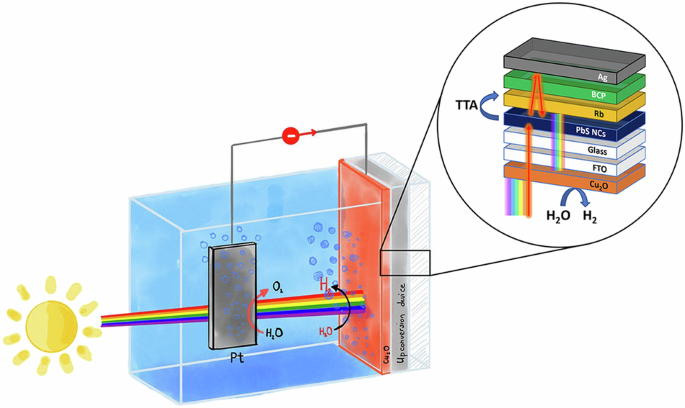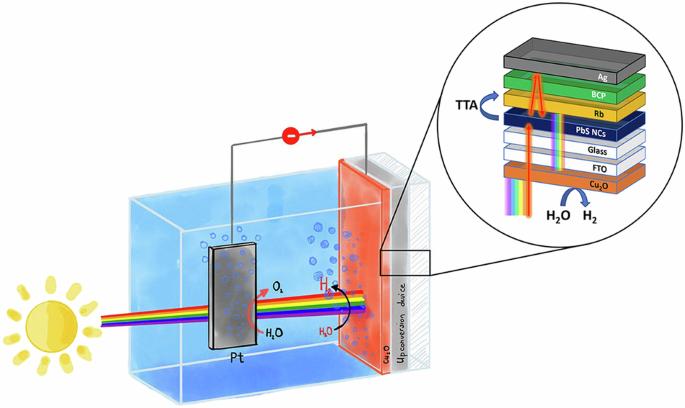Copper oxide coupled with photon upconversion for solar water splitting
IF 7.5
Q1 MATERIALS SCIENCE, MULTIDISCIPLINARY
引用次数: 0
Abstract
Photoelectrochemical water splitting is a promising solution for harnessing solar radiation for hydrogen production. Copper oxide semiconductors, particularly materials based on cuprous oxide, have attracted attention due to their abundant elemental availability and scalable synthesis methods. To improve the generated photocurrent of the photoelectrode system, photon upconversion materials can be implemented into water-splitting devices. Here, we demonstrate the potential application of triplet-triplet annihilation-based upconversion in solar-assisted water splitting and highlight the significance of photonic designs to improve the light-harnessing properties of photoactive materials. The triplet-triplet annihilation mechanism is particularly suitable due to its efficient conversion at low photon intensity, namely under 1-sun illumination. Our results show that Cu2O coupled with an upconverter outperforms bare Cu2O by 56% in terms of produced photocurrent density. We construct a hybrid water-splitting device with an extended absorption range by utilizing a semi-transparent 600 nm Cu2O film with a 5 nm Au underlayer. Photoelectrochemical water splitting uses solar radiation for hydrogen production. Here, triplet-triplet annihilation-based upconversion is integrated into a water-splitting device which improves the light-harnessing properties of the photoactive materials


用于太阳能水分离的光子上转换耦合氧化铜
光电化学水分裂是利用太阳辐射制氢的一种前景广阔的解决方案。氧化铜半导体,尤其是基于氧化亚铜的材料,因其丰富的元素供应和可扩展的合成方法而备受关注。为了提高光电极系统产生的光电流,可将光子上转换材料应用到分水装置中。在此,我们展示了基于三重三重湮灭的上转换技术在太阳能辅助水分离中的潜在应用,并强调了光子设计对改善光活性材料光收集特性的重要意义。三重-三重湮灭机制特别适合在低光子强度下(即在 1 太阳光照射下)进行高效转换。我们的研究结果表明,就产生的光电流密度而言,与上转换器耦合的 Cu2O 比裸 Cu2O 高出 56%。我们利用带 5 纳米金底层的半透明 600 纳米 Cu2O 薄膜,构建了一种具有扩展吸收范围的混合分水器件。
本文章由计算机程序翻译,如有差异,请以英文原文为准。
求助全文
约1分钟内获得全文
求助全文
来源期刊

Communications Materials
MATERIALS SCIENCE, MULTIDISCIPLINARY-
CiteScore
12.10
自引率
1.30%
发文量
85
审稿时长
17 weeks
期刊介绍:
Communications Materials, a selective open access journal within Nature Portfolio, is dedicated to publishing top-tier research, reviews, and commentary across all facets of materials science. The journal showcases significant advancements in specialized research areas, encompassing both fundamental and applied studies. Serving as an open access option for materials sciences, Communications Materials applies less stringent criteria for impact and significance compared to Nature-branded journals, including Nature Communications.
 求助内容:
求助内容: 应助结果提醒方式:
应助结果提醒方式:


